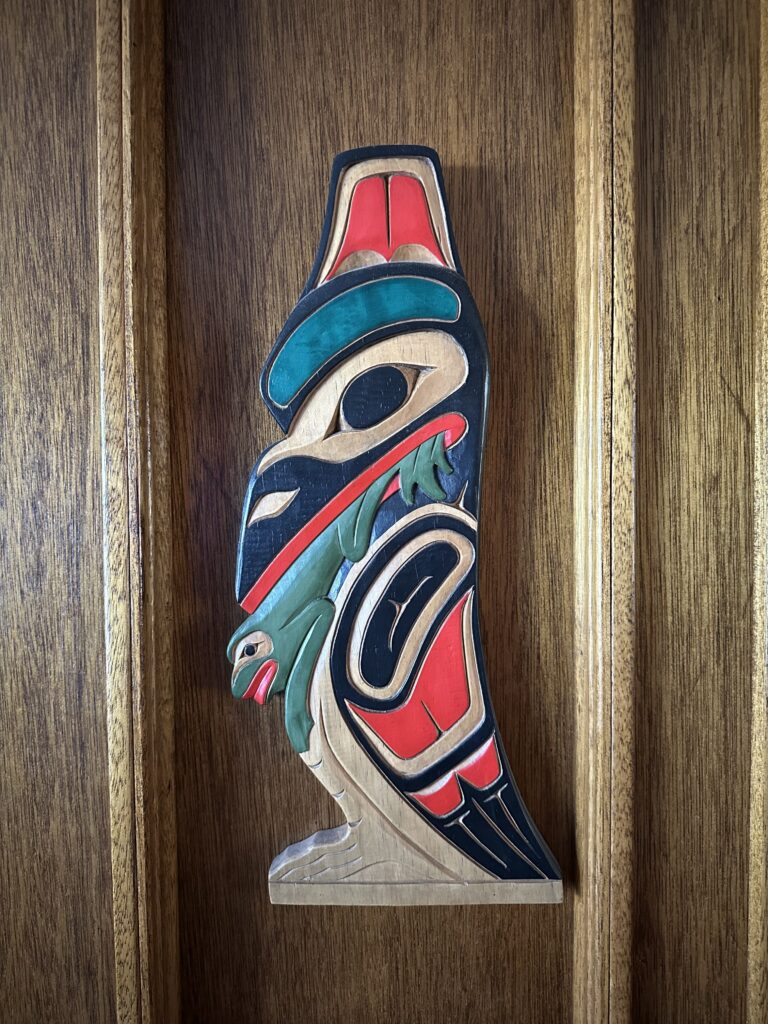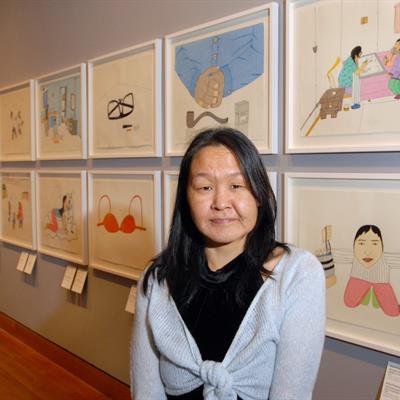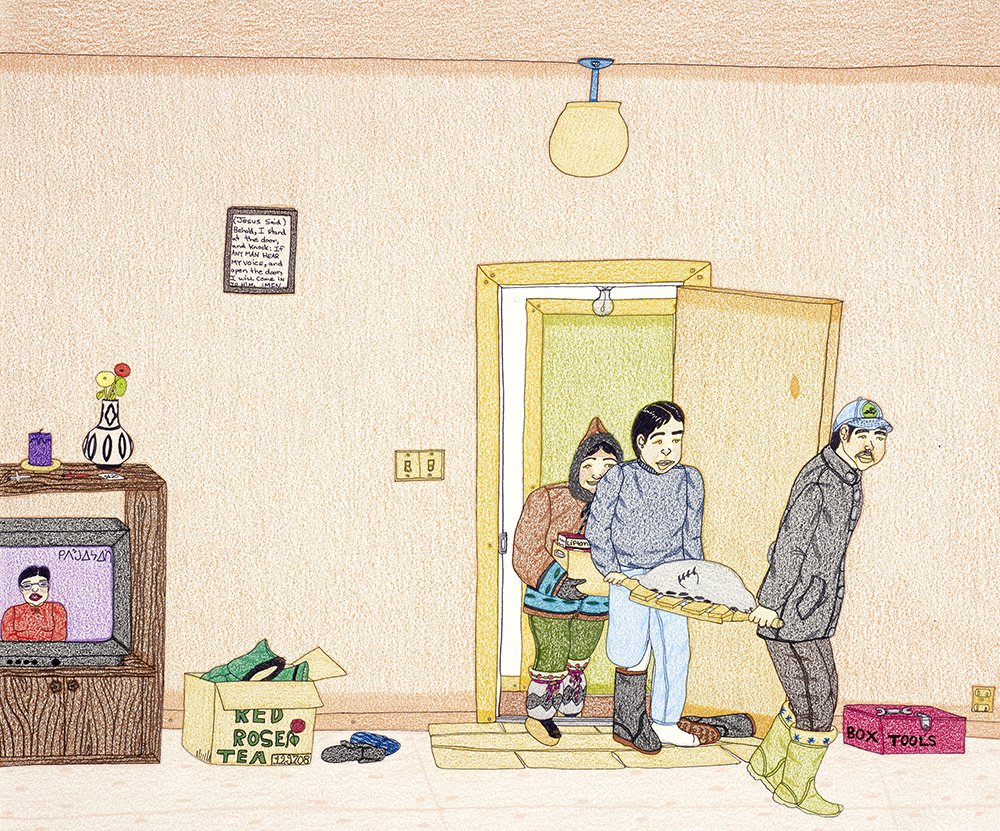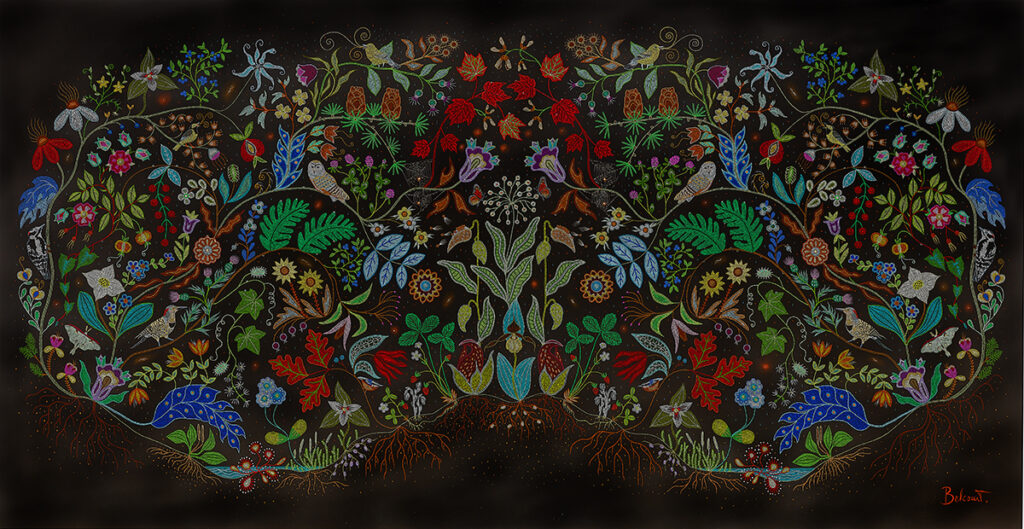After exploring the materials, forms, and histories of Northwest Coast, Inuit, and Métis art in my earlier posts, it’s time to meet some of the people who make these visuals come alive. Below I’ve put together some short profiles of influential artists from each tradition, showing how individual lives, places, and choices shape contemporary Indigenous art in Canada
NORTHWEST COAST
Iljuwas Bill Reid (1920–1998) was a Haida artist born in Victoria, B.C., who became one of the most influential mid-20th century figures in the Northwest Coast art revival. He worked as a goldsmith, carver, sculptor, educator and community advocate.
Medium & Style:
Jewelry, wood and bronze sculpture, printmaking, Reid translated traditional Haida formline design into large public sculpture as well as gold and silver work.
Themes/cultural Messages:
Reid’s work reinterprets Haida mythologies and family crests and frames Indigenous cultural resurgence and identity for national audiences.
Notable Pieces & Where to See Them:
The Spirit of Haida Gwaii / The Jade Canoe (bronze, large public sculpture), multiple casts and Reid’s works are in the Bill Reid Gallery (Vancouver) and institutions such as the Vancouver International Airport.

Spirit of Haida Gwaii: The Jade Canoe, 1996, plaster, bronze with patina, Vancouver International Airport
Artie George (Coast Salish / Tsleil-Waututh)

Artie George with his Large Pole carvings
Artie George (b. 1970) is a Coast Salish woodcarver from the Tsleil-Waututh Nation (Burrard Band), and is a great nephew of Chief Dan George, a Canadian actor, Indigenous Chief, activist and poet. Artie George was born in North Vancouver and began carving at the age of 13, mostly self-taught.
Medium & Style:
He creates wood carvings, both miniature and full scale, including masks, plaques, poles, spirit boxes, rattles, and other ceremonial or decorative forms. He also incorporates polychrome (paint) on his carvings.
Themes/cultural Messages:
George’s work engages with the continuity of Coast Salish visual language, the spirit world, and the presence of nature in human life. His carvings often carry symbolic and spiritual meaning connected with ancestral practices and local stories
Notable Pieces & Where to See Them:
He exhibits via the Coast Raven Design Studio gallery in Davis Bay, B.C. The photo I’ve included below is a carving by Artie George that my family purchased at the Coast Raven Design Studio directly from him and have displayed in our home.

INUIT
Annie Pootoogook (Kinngait/Cape Dorset)

Courtesy Art Gallery of Nova Scotia Photo Denis Bernier
Annie Pootoogook (1969–2016) was an Inuit artist from Kinngait (Cape Dorset) Nunavut, whose intimate drawings showed contemporary life in Inuit communities such as domestic scenes, social aspects, and everyday humour. On September 19, 2016, Annie tragically drowned in an Ottawa river. Police deemed her death suspicious, and the investigation attracted widespread attention due to her recognition as an internationally acclaimed artist.
Medium & Style:
Coloured pencil and ink drawings, candid, often small scale and intimately detailed.
Themes & Cultural Messages:
Everyday life in settlement communities. The social effects of modernity, housing, health and family life. Annie’s artwork is a powerful counter-narrative to romanticized Arctic imagery.
Notable Pieces & Where to See Them:
Works by Annie Pootoogook are in national collections and have been shown at contemporary galleries like The Power Plant (Toronto) and the National Gallery of Canada.

Annie Pootoogook (1969 ‑ 2016), Bringing Home Food 2003‑2004
METIS
Christi Belcourt (apihtâwikosisâniskwêw / mânitow sâkahikanihk)
Christi Belcourt (b. 1966) is a Michif-Métis painter and activist known for detailed acrylic paintings inspired by Métis beadwork, as well as projects that connect art to environmental and social advocacy.
Medium & Style:
Acrylic paintings with dense, highly detailed floral patterns that reference historical Métis beadwork; she also works in community projects and public art.
Themes & Cultural Messages:
Interconnectedness of living things and life, Indigenous and ancestral knowledge, cultural resurgence, and stewardship of the land.
Notable Pieces and Where to See Them:
Belcourt’s paintings and community works are exhibited widely; she’s also known for public projects and collaborations. A collection of her works for purchase are displayed on this website.

Final Thoughts
Across these Nations, Indigenous artists share their identity, connection, and strength through their art. Whether it’s carving, painting, beadwork, or drawing, each piece shows a deep bond with the land, culture, and community. Together, these artists show that Indigenous art is alive and always growing, linking the past with the future.

Sorry, but comments are not enabled on this site.